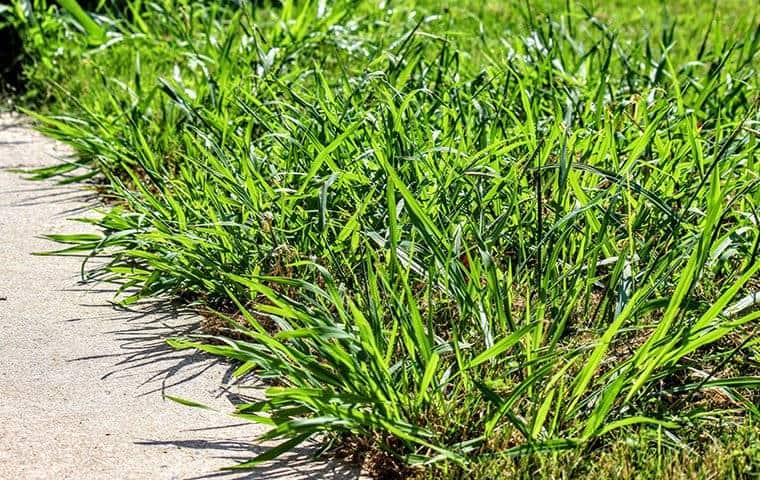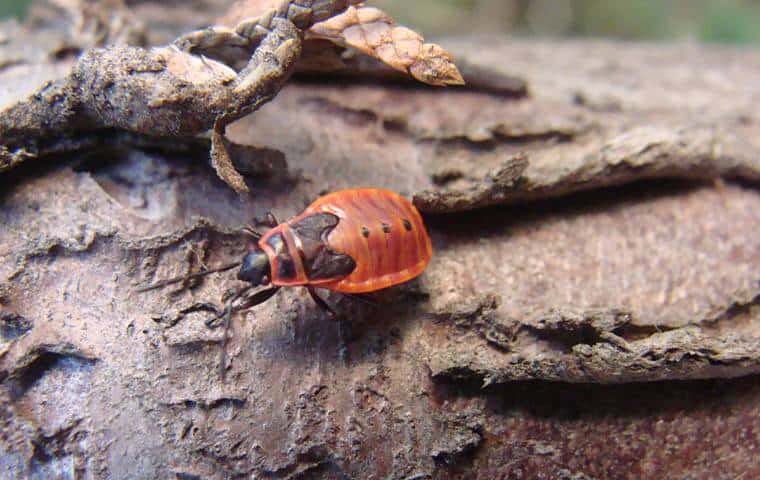As winter approaches and temperatures drop, it's not just the cold that homeowners need to be wary of. Winter also marks the start of a new crucial battle against pests seeking warmth and shelter inside our homes. While we often associate pest control with warmer months, it is crucial to remember that pests like rodents, spiders, and cockroaches are actively searching for ways to enter your home and invade your home during colder seasons.
Protecting your home's exterior from these unwanted guests is key to maintaining a cozy and safe interior of your home for you and your family throughout winter. Not only do these intruders pose health risks through their droppings or bites, but they can also cause structural damage or contaminate food supplies. From tiny crevices in the foundation to gaps around doors and windows, pests can find numerous gateways into our homes if we're not proactive in creating effective barriers.
In this article, we will delve into practical tips and strategies that homeowners can implement to fortify their homes against winter insects. Whether you've experienced pest issues before or are simply looking to prevent them altogether, this comprehensive guide will equip you with valuable insights on how best to protect your home's exterior during the colder months. So let's roll up our sleeves together as we explore preventative measures that help keep your home pest-free during the cruel winter weather.

Identify Vulnerable Areas:
Pests are opportunistic creatures that can exploit even the tiniest openings to gain entry into your home. To protect your home from unwanted guests, it's crucial to identify and address vulnerable areas where pests are most likely to get in. Start by inspecting the exterior of your home for any gaps in doors or windows, cracks in walls, or damaged screens. These small openings may seem insignificant, but they can provide a pathway for pests to enter your home and infiltrate your living space.
Carefully examine all entry points around doors and windows for signs of wear and tear. Look out for gaps between frames and the surrounding walls that pests could squeeze through. Any crack wider than a credit card should be sealed immediately using weatherstripping or caulk. Additionally, make sure window screens are intact without holes or tears that bugs could exploit.
Don't forget about other common access points like utility openings and vents as well. Check these areas regularly to ensure they are properly sealed with tight-fitting covers or screens. By identifying these vulnerable areas in advance, you'll be able to fortify them effectively before the cold months arrive.
Remember, prevention is always better than dealing with a full-blown infestation later on. So take some time now to carefully inspect your home's exterior and seal off any potential entrance points for pests this winter season.
Seal Crack sand Gaps:
When it comes to keeping pests out of your home during the winter, sealing cracks and gaps is absolutely crucial for pest proofing. Pests can easily find their way into even the tiniest openings, so it's important to diligently inspect your home's exterior for any potential gateways. Start by examining the foundation of your house, paying close attention to areas where pipes or electrical wires enter. Check the corners and edges of windows and doors as well.
Once you've identified these problem areas, it's time to take action. For smaller gaps or cracks, you can use weather-stripping or caulking to seal them off effectively. Weather-stripping works best for gaps around doors and windows while caulk is ideal for filling in cracks on walls or foundations. Be sure to choose a high-quality caulk that is resistant to water and extreme temperatures.
For larger openings such as spaces between utility pipes, you may need stronger materials like wire mesh or metal flashing combined with an exterior-grade sealant. This combination creates a barrier that not only prevents pests from entering areas of your home but also withstands harsh weather conditions and common winter pests.
By following these simple step-by-step instructions based on the type of opening you're dealing with, you'll be able to create a strong defense against pests seeking shelter inside your home during the winter months. Remember, thoroughness is key—no gap should be left unsealed!
Install Door Sweeps and Window Screens:
One simple yet effective method of creating a barrier against pests is by installing door sweeps and window screens. These additions can help keep unwanted critters out of your home, while still allowing fresh air to circulate.
Door sweeps are weatherproof strips that attach to the bottom of exterior doors, providing a tight seal when closed. Not only do they prevent drafts and improve energy efficiency, but they also act as a physical barrier for insects and rodents. When choosing door sweeps, consider the material based on your specific needs. Rubber or vinyl sweeps are ideal for blocking out drafts and smaller pests like ants or spiders; whereas heavier-duty aluminum or brush sweeps are better suited for deterring larger invaders such as mice and rats.
Similarly, window screens serve as an essential line of defense against airborne pests like flies, mosquitoes, and even bats. Opting for high-quality mesh screens with tightly woven patterns will ensure that no tiny intruders slip through the cracks. Additionally, it's important to regularly inspect screens for any tears or holes – even minor damages can provide an entry point for insects seeking shelter inside of your home this winter.
By equipping your home with sturdy door sweeps and well-maintained window screens, you'll create another layer of protection against potential pest infestations throughout the winter season.
Clean Up Outdoor Spaces:
To create an effective pest barrier around your home's exterior, it is crucial to start by cleaning up and decluttering the surrounding outdoor areas. Pests such as rodents and spiders are attracted to debris and clutter, which can provide them with hiding spots and easy access points into your home. Take a walk around your property and identify any areas where leaves have accumulated, piles of firewood or unused items are stored in airtight containers, or garbage cans are left uncovered. These places act as magnets for pests seeking shelter during the winter months.
Start by removing any fallen leaves from gutters, downspouts, and yard spaces near your home’s foundation. This will not only reduce the risk of gutter clogging but also eliminate potential nesting sites for insects like mosquitoes or termites. Additionally, make sure to keep firewood at least 20 feet away from your home; otherwise, it becomes an inviting refuge for wood-destroying pests like carpenter ants or beetles.
Furthermore, it is important to regularly trim back vegetation that grows close to your walls and windows. Overgrown shrubs or tree branches can become bridges that allow pests easy access to your home's interior. By keeping plants neatly trimmed away from windows and walls, you minimize these entry points while also enhancing airflow and reducing moisture buildup on surfaces – another deterrent for various pests.
By proactively eliminating debris buildup in outdoor spaces surrounding your home's perimeter while maintaining tidy landscapes with well-trimmed vegetation practices throughout fall season onward - you ensure a more controlled environment that significantly reduces favorable conditions which attract pests into our clean home living space.
Create a Protective Barrier:
When it comes to keeping pests out of your home during the winter months, creating a strong and effective barrier is essential. One option for creating a physical barrier is by installing mesh or netting on vents and around the foundation of your home. These barriers can help prevent pests such as rodents, birds, and insects from accessing entry points into your house.
Vents are often overlooked as potential entry points for unwanted guests, but they can provide an easy access point for rodents or birds seeking shelter in your attic or crawl space. By covering these vents with mesh or netting, you can block off this entrance while still allowing proper ventilation.
Similarly, the foundation of your home should be well-protected against pest intrusion. Ensure that all cracks and gaps are properly sealed to prevent any small creatures from finding their way inside. Installing wire mesh along the bottom of exterior walls can also be an effective deterrent against burrowing pests like mice.
It's important to note that even though physical barriers provide an initial defense mechanism against pests, regular inspections and maintenance are necessary to ensure their effectiveness. Over time, meshes may become damaged or come loose due to weather conditions or wear-and-tear. By conducting routine checks and promptly repairing any damage, you'll maintain strong protective measures throughout the winter season.
Seek Professional Help:
While there are many preventive measures homeowners can take to protect their homes from pests during the winter, sometimes it's necessary to call in the professionals. Pest control experts have the knowledge, experience, and tools needed to assess your home's exterior and determine the most effective pest prevention strategies.
If you've noticed signs of infestation or suspect that your home may be at risk, it's important to seek professional help as soon as possible. Signs of a potential pest problem include droppings, gnaw marks on furniture or walls, strange smells, and unusual sounds coming from within your walls. A thorough inspection by a professional can identify any entry points or vulnerabilities in your home's exterior that pests could exploit.
Additionally, certain types of pests may require specialized treatments that are best handled by professionals. For example, if you're dealing with termites or bed bugs, attempting DIY methods may only worsen the infestation and cause further damage. Pest control professionals have access to more powerful insecticides and techniques specifically designed for these stubborn pests.
By seeking professional help early on and following their recommendations for preventing pest invasions in the winter months, homeowners can save themselves time, money, and headaches down the road. Don't hesitate to reach out for assistance when necessary – protecting your home is worth it! Year-round pest control services and pest management can keep you worry free for the entire year.
Creating Winter Pest Barriers: Recap and Action Steps
Now that you have learned about the importance of creating effective winter pest barriers for your home, it's time to take action. By implementing these strategies, you can protect your home from unwanted pests during the chilly months.
First and foremost, make sure to seal off any entry points where pests can gain access to your home. This includes sealing cracks in walls, around windows and doors, and repairing any damaged screens or vents. Remember, even the tiniest opening can be an invitation for pests seeking warmth and shelter during winter.
Next, focus on maintaining a clean environment both inside and outside of your home. Keep your gutters free from debris as clogged gutters can attract insects such as mosquitoes or termites. Prune back tree branches that touch or hang over your roofline to prevent easy access for rodents looking for entry points. Insects and pets are in search of food so keep any food or standing water to a minimum.
Consider using natural deterrents like peppermint oil or lavender sachets strategically placed in areas prone to infestation. These scents are disliked by many common household pests such as mice and spiders. Additionally, ensure proper storage of firewood away from the exterior walls of your house since it is a favored hiding spot for ants or other small critters seeking refuge from the cold.
By following these steps diligently not just during winter but also throughout the year, you'll greatly reduce the risk of pest invasions in your cozy haven!



